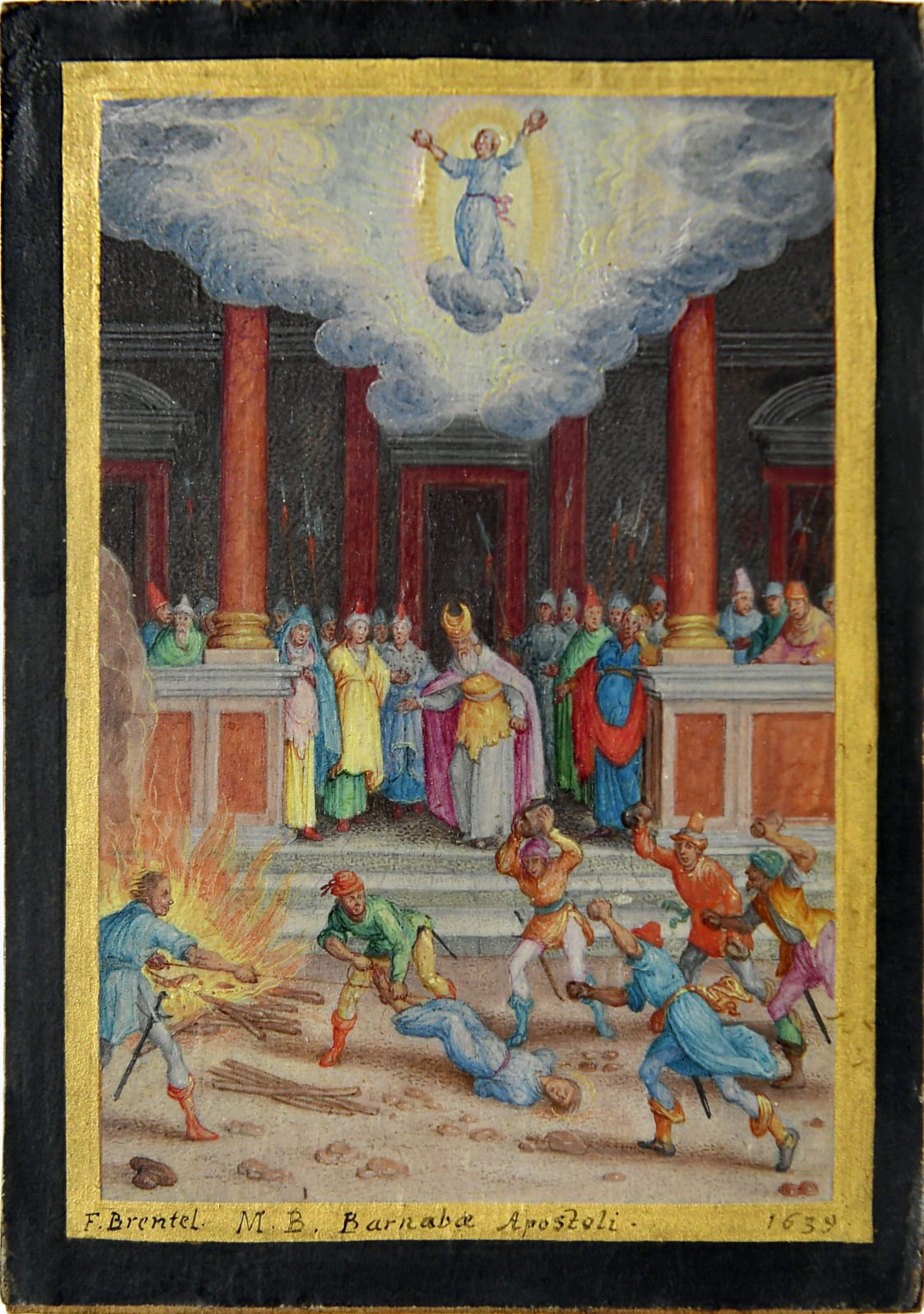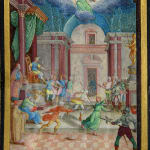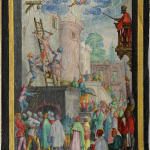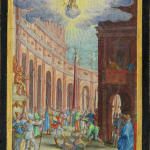Friedrich Brentel (Lauingen 1580 - 1651 Strasbourg)
Further images
Tiny in size yet monumental at the same time, these somewhat 'cutesy' depictions of gruesome torture and death are certainly morbid, yet also a true delight to look at. Marveling at all the details one would almost forget the horrors they depict.
Friedrich Brentel was born in Lauingen in 1580. His father Georg was a painter. In 1587 the family moved to Strasbourg, where young Friedrich was taught as a painter, presumably by his father. Later on, he must have travelled to the (Southern) Netherlands, where he trained as a painter of miniatures. It is not known where and with whom he studied; his work is however stylistically quite close to that of the Southern miniature painter Hans Bol. Brentel’s first dated miniature was painted in 1618, which sadly does not shed much light on his earlier endeavours. In 1601, he married Anna Brackenhoffer - the couple would have two children and became a burger of Strasbourg, where he would live and work for most of his life acquiring fame as the city’s best painter. He taught several pupils, including the miniature painter Johann Wilhelm Baur and - for a short while - the still life painter Sebastian Stoskopff.
Until about 1620, Brentel mostly produced engravings, whereas later on he mostly focused on miniature painting. In 1642 he also published a book on miniature painting. The present series of ten miniatures depicting Christian Martyrs, minute in size yet full of intricate details, was painted in 1639/40, when Brentel was a mature artist. While he did produce many gouaches with his own compositions, Brentel also made numerous miniature replicas of paintings or prints by contemporary artists such as Bruegel, Rubens and Van Dyck. The iconography of the present series derives from a group of etchings by Jacques Callot, although the artist has taken the liberty to make some changes here and there. Together they show off the skilled and steadfast hand of the master.
Provenance
Private collection, Austria.











